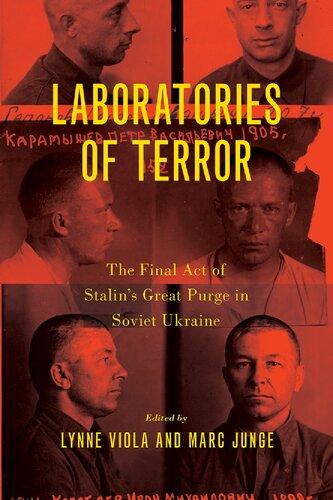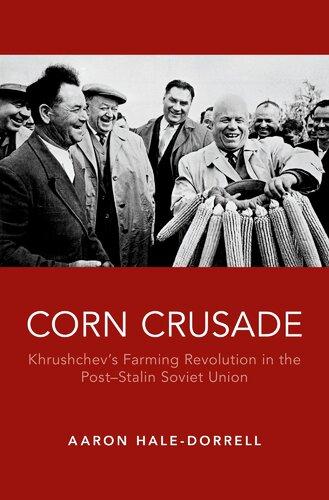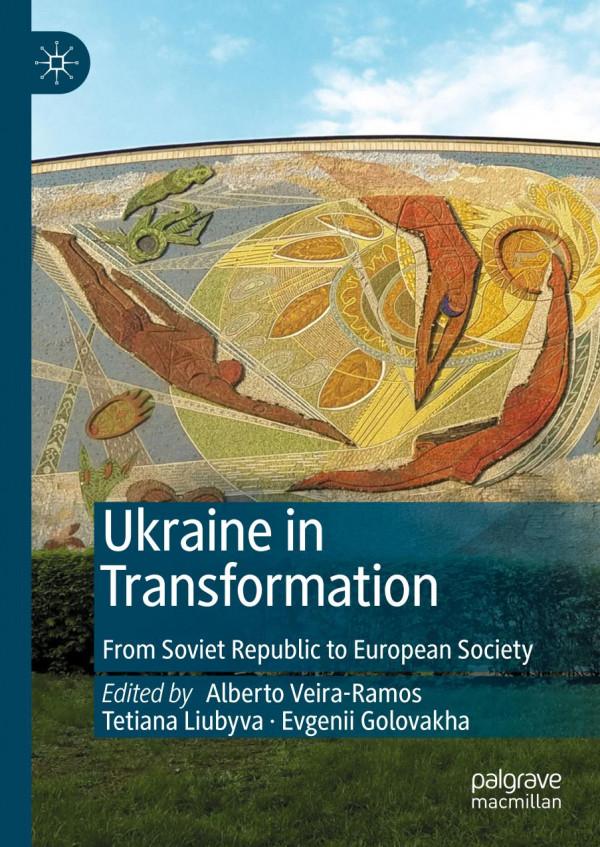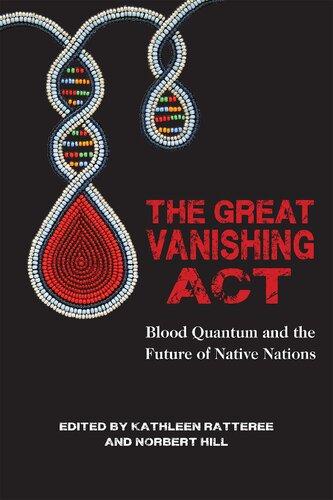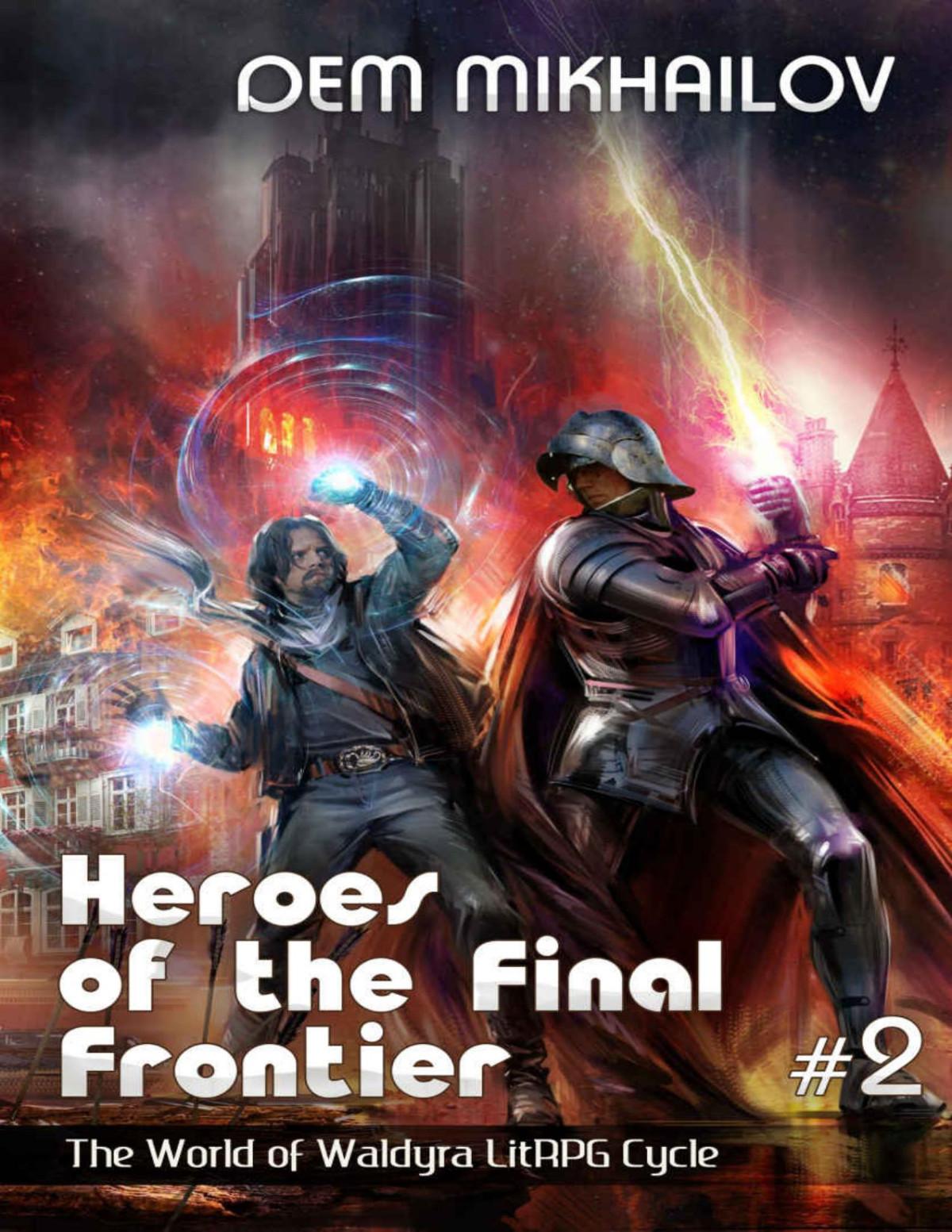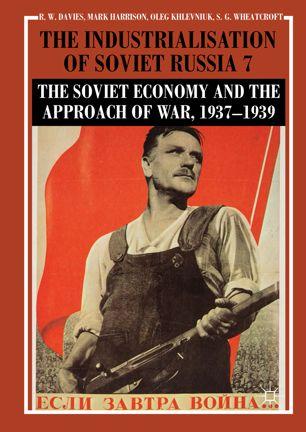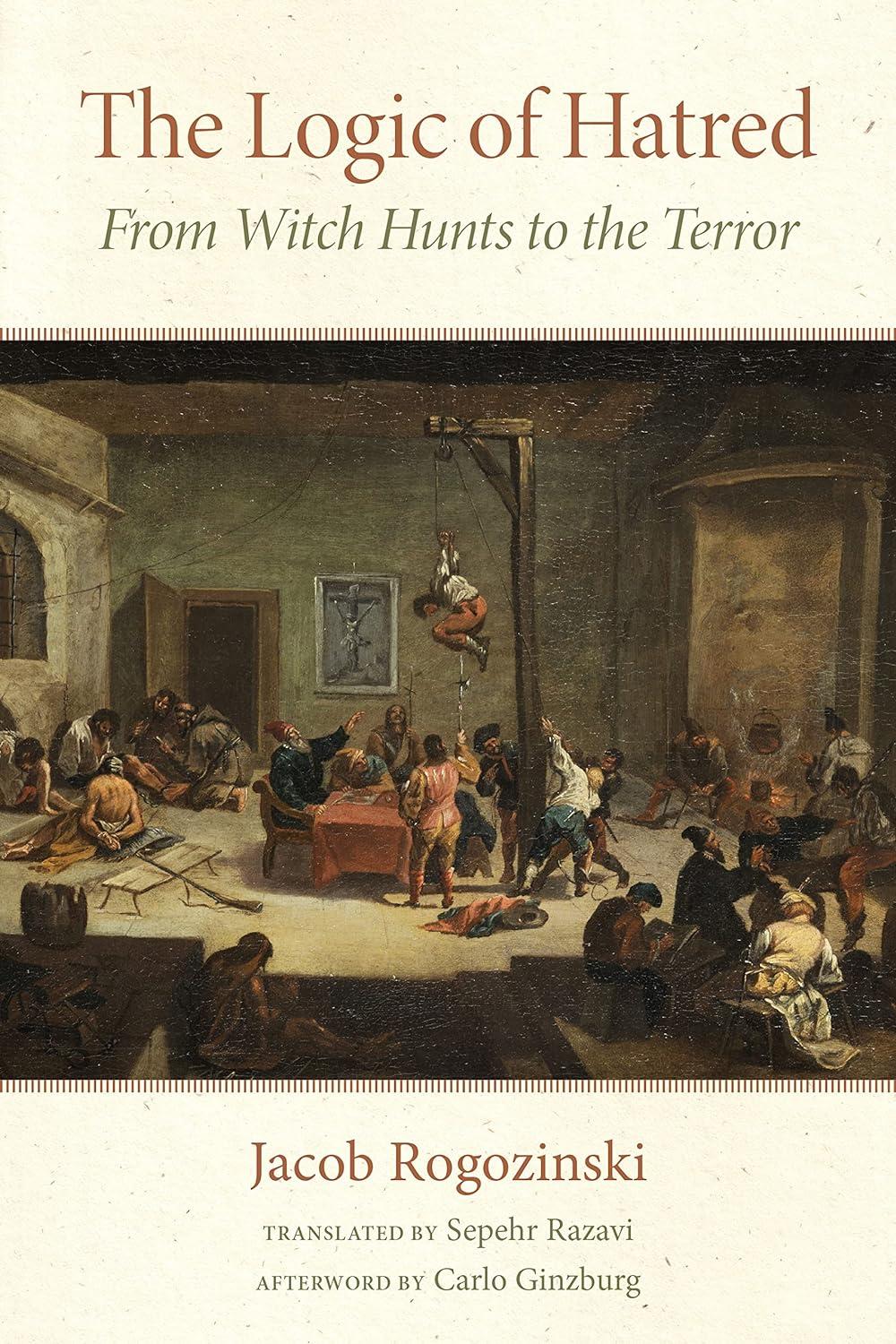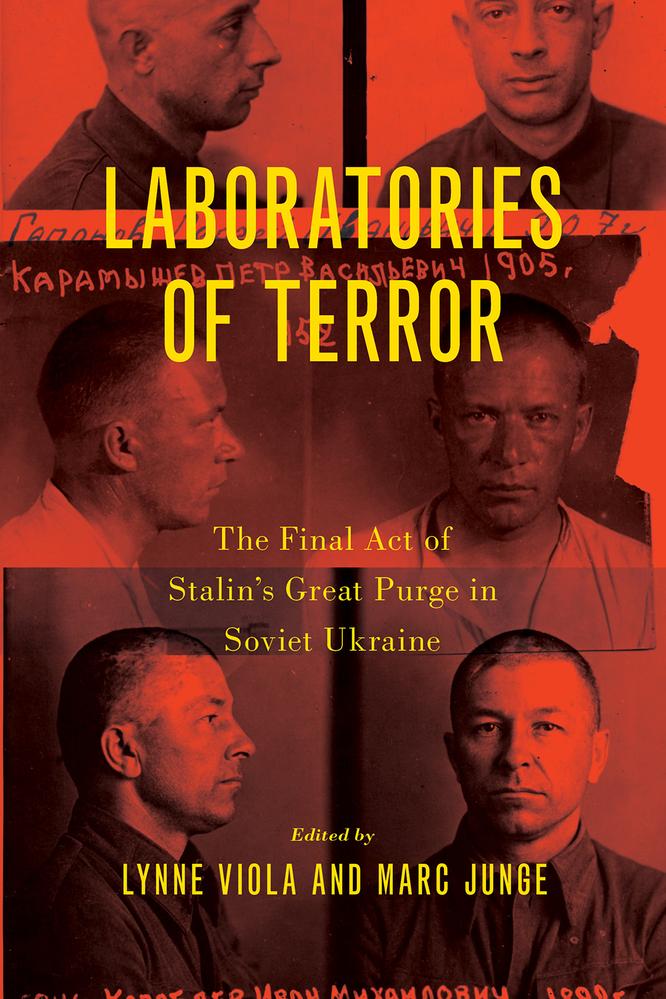LABORATORIES OF TERROR
The Final Act of Stalin’s Great Purge in Soviet Ukraine z
Edited by LYNNE VIOLA AND MARC JUNGE
Oxford University Press is a department of the University of Oxford. It furthers the University’s objective of excellence in research, scholarship, and education by publishing worldwide. Oxford is a registered trade mark of Oxford University Press in the UK and certain other countries.
Published in the United States of America by Oxford University Press 198 Madison Avenue, New York, NY 10016, United States of America.
© Oxford University Press 2023
All rights reserved. No part of this publication may be reproduced, stored in a retrieval system, or transmitted, in any form or by any means, without the prior permission in writing of Oxford University Press, or as expressly permitted by law, by license, or under terms agreed with the appropriate reproduction rights organization. Inquiries concerning reproduction outside the scope of the above should be sent to the Rights Department, Oxford University Press, at the address above.
You must not circulate this work in any other form and you must impose this same condition on any acquirer.
Library of Congress Cataloging-in-Publication Data
Names: Viola, Lynne, editor. | Junge, Marc, editor.
Title: Laboratories of terror : the fnal act of Stalin’s great purge in Soviet Ukraine /edited by Lynne Viola and Marc Junge
Other titles: Final act of Stalin’s great purge in Soviet Ukraine
Description: New York, NY: Oxford Unitersity Press, [2023] | Includes index. Identifers: LCCN 2022042426 (print) | LCCN 2022042427 (ebook) | ISBN 9780197647547 (hardback) | ISBN 9780197647554 (paperback) | ISBN 9780197647578 (epub) | ISBN 9780197647585
Subjects: LCSH: Soviet Union. Narodnyi komissariat vnutrennikh del. | Political purges—Ukraine—History—20th century. | Political purges—Soviet Union—History. | Ukraine. Narodnyi komisariiat vnutrishnikh sprav. | State-sponsored terrorism—Ukraine—History—20th century. | Soviet Union—Politics and government—1936-1953. Classifcation: LCC DK508.833 .L33 2023 (print) | LCC DK508.833 (ebook) | DDC 947.70842—dc23/eng/20220906
LC record available at https://lccn.loc.gov/2022042426
LC ebook record available at https://lccn.loc.gov/2022042427
DOI: 10.1093/oso/9780197647547.001.0001 1 3 5 7 9 8 6 4 2
Paperback printed by Lakeside Book Company, United States of America
Hardback printed by Bridgeport National Bindery, Inc., United States of America
Tis book is dedicated to Memorial and all its tireless work for human rights and for history.
Acknowledgments
Introduction—Lynne Viola and Marc Junge 1
1. “ Te Party Will Demand a Full Reckoning”: Korablev and the Vinnitsa NKVD—Valeriy Vasylyev and Roman Podkur 24
2. “ Te Party Makes Mistakes, the NKVD—Never”: Te NKVD in Odessa—Andrei Savin and Aleksei Tepliakov 49
3. “A Sacrifcial Ofering”: Karamyshev and the Nikolaev NKVD—Marc Junge 77
4. “Enemies Within”: Pertsov and the NKVD in Kharkov and Odessa—Vadym Zolotar’ov 106
5. “Under the Dictation of Fleishman”: Te NKVD in Skvira—Lynne Viola 134
6. “ Te Situation at the Time”: Te NKVD in Zhitomir—Serhii Kokin 156
7. “ Tis Is How You Interrogate and Secure Testimony”: Kocherginskii and the Northern Donetsk Railway NKVD—Jefrey J. Rossman 185
Acknowledgments
The project from which this volume derives began in 2010 at a conference on Stalinist terror, convened by James Harris in Leeds, UK.1 Lynne Viola presented a paper on the general subject of perpetrators. In response, Marc Junge noted the existence and accessibility of key sources on NKVD perpetrators in the Ukrainian SBU archives. Subsequently, in 2011, Viola and Junge made an initial foray into the Kyiv archives. Te volume of materials was so vast that they enlisted a team of experienced scholars from Ukraine, Russia, Moldova, Georgia, and the United States to join them in this research. Tese scholars included Valeriy Vasylyev, Roman Podkur, Vadym Zolotar’ov, Serhii Kokin, Andrei Savin, and Aleksei Tepliakov. At a later stage, they were joined by Ol’ga Dovbnja, Igor Casu, Timothy Blauvelt, and Jefrey Rossman. Te team published four volumes of archival documents, as well as an anthology of articles, each in Ukrainian and in Russian.2 Although we completed the main body of our work before the Russian invasion of Ukraine in February 2022, the project’s success was based on Ukrainians, Russians, and others working together. Te current, unprovoked war against Ukraine in no way detracts from our successful collaboration, but it is a reminder of the dangers, still, of dictatorial regimes. Te chapters presented here are English translations of the fnal results of this collective work, covering events in the Ukrainian
1. Conference proceedings were later published in James Harris, ed., Te Anatomy of Terror: Political Violence under Stalin (Oxford: Oxford University Press, 2013).
2. Te published documents are in Marc Junge, Lynne Viola, and Jefrey Rossman, eds., Ekho bol’shogo terrora v 3 tomakh (Moscow: Probel-2000, 2017–2019) and, in Ukrainian, Vidlunnia velkogo terror v 3 tomakh (Kyiv: Vidavets’ V. Zakharenko, 2017–2019). Te anthologies were frst published in Z arkhiviv VUChK-GPU-NKVD-KGB, nos. 1–2 (2015) and then in Russian as Marc Junge, Lynne Viola, Jefrey Rossman, eds., Chekisty na skam’e podsudimykh (Moscow: Probel-2000, 2017).
Acknowledgments x
oblasts (or regions) of Kiev (Kyiv), Zhitomir (Zhytomyr), Odessa (Odesa), Vinnitsa (Vinnytsia), Nikolaev (Mykolaiv), and Kharkov (Kharkiv). Te pages that follow use the Russian versions of Ukrainian place names given that Russian is the language of the documents.
Te editors are pleased to take this opportunity to thank the following institutions for their continued support over the years of this project: the German Research Foundation; the American Council of Learned Societies; the Harry Frank Guggenheim Foundation; the Social Science and Humanities Research Council of Canada; the University of Erlangen, Germany; the University of Toronto, Canada; and the University of Virginia, US. We are especially grateful to the State Archive of the Security Services of Ukraine (Haluzevyi derzhavnyi arkhiv Sluzhby bezpeky Ukrainy) and its fne and professional staf. In particular, we would like to take this opportunity to thank Mariia Panova, who worked tirelessly with our team; Georhii Smirnov; and the administrator-historians of the archive: Serhii Kokin, I. M. Kulyk, Andrei Kogut, and Vitalii Lytvynenko. We thank the book’s translators (from Russian and German to English), Simon Belokowsky, Aaron Hale-Dorell, and Caroline Cormier, for their excellent work on the project. Peter Solomon also played a key role at the outset of this project. Finally, thank you to Susan Ferber and Oxford University Press for their fne work on this project.
Chapter 5 adapts material originally published in Stalinist Perpetrators on Trial: Scenes fom the Great Terror in Soviet Ukraine by Lynne Viola, and has been reproduced by permission of Oxford University Press.
Contributors and Translators
Simon Belokowsky defended his Georgetown University doctoral dissertation Youth Is to Live in the City!: Rural Out-Migration in the Black Earth Region under Khrushchev and Brezhnev at Georgetown University. He is also the author of “Laughing on the Inside: Gulag Humour as Evidence for Gulag Society,” Journal of Social History 52, no. 4 (Summer 2019): 1281–1306.
Caroline Cormier is a PhD candidate in the Department of History at the University of Toronto. Her dissertation is entitled “Spaces of Displacement: Te History and Commemoration of Jewish Homes and Judenhauser in Nazi Berlin.”
Aaron Hale-Dorrell is an independent scholar, adjunct instructor, translator, and stay-at-home parent. He is the author of Corn Crusade: Khrushchev’s Farming Revolution in the Post-Stalin Soviet Union (New York: Oxford University Press, 2018) and “Deserters from the Labour Front: Te Limits of Coercion in the Soviet war economy,” Kritika 20, no. 3 (2019): 481–504 (with Oleg Khlevniuk).
Marc Junge is a Senior Researcher at the Department of History, Eastern European History section, at the University of Erlangen, Germany. His work includes Stalin’s Mass Repression and the Cold War Paradigm (New York: Kindle, 2016) and Stalinistische Modernisierung: Die Strafverfolgung von Akteuren des Staatsterrors in der Ukraine 1939–1941 [Stalinist modernization: the purge of state terror agents in the Ukraine 1939–1941] (Bielefeld: Transcript-Verlag, 2020).
Serhii Kokin is a Senior Researcher at the Institute of Ukrainian History of the Ukrainian Academy of Science, Kyiv, Ukraine, and former director of the State Archive of the Security Police of Ukraine (Haluzevii derzhavnyi arkhiv Sluzhbyi bezpeky Ukrainy). He is coeditor of Radians’ki orhany derzhavnoii bezpeky u 1939–chervni 1941 r.: dokumenty HDA SBU Ukrainy
Contributors and
[Soviet state security agencies in 1939–June 1941. Documents of the Special State Archive of the Security Service of Ukraine] (Kyiv: “Kyivo-Mohylianska akademiia,” 2009); and the author of “Nimets’ka operatsiia NKVS v suchasnii istoriografii,” in “Velykyi teror” v Ukraini: Nimets’ka operatsiia 1937–1938 rokiv. Zbirnyk dokumentiv [“Te NKVD German operation in modern historiography,” in Te “Great Terror” in the Ukraine. Te German Operation 1937–1938] (Kyiv, 2018), 42–80, 81–121.
Roman Podkur is a Senior Researcher at the Institute of Ukrainian History of the Ukrainian Academy of Science, Kyiv, Ukraine. His work includes “Velykyi terror” 1937–1938 rr. na Donbasi [“Te Great Terror”: 1937–1938 in the Donbass] (Kyiv: Institut istoriii Ukrainy NAN Ukraine, 2016) and (as coeditor) Reabilitovani istoriieiu: Chernihivs’ka oblast’ [Rehabilitation by History: Chernihivs’ka oblast’] (Chernihiv: Vidavets’ V. Lozovyi, 2018).
Jefrey J. Rossman is Professor of History and Director of the Center for Russian, East European, and Eurasian Studies at the University of Virginia. He is the author of Worker Resistance under Stalin: Class and Revolution on the Shop Floor (Cambridge, MA: Harvard University Press, 2005).
Andrei Savin is a Senior Researcher at the Institute of History of the Siberian Branch of the Russian Academy of Sciences, Novosibirsk, Russia. His work includes Die Sibiriendeutschen im Sowjetstaat. 1919–1938 [Te Siberian Germans in the Soviet State] (Essen: Klartext, 2001) (with Detlef Brandes) and Unter dem wachsamen Auge des Staates: Religiöser Dissens der Russlanddeutschen in der Breschnew-Ära [Under the watchful eye of the state: religious dissent of Russian Germans in the Brezhnev era] (Wiesbaden: Harrassowitz Verlag, 2019) (with Victor Dönninghaus).
Aleksei Tepliakov is Associate Professor at the Novosibirsk State University of Economics and Management, Department of Philosophy and Humanities, Russian Federation. Among his works are Mashina terrora: OGPU-NKVD Sibiri v 1929–1941 gg. [Machine of terror: OGPU-NKVD of Siberia in 1929–1941] (Moscow: Novyi Khronograf; AIRO-X XI, 2008) and Deiatel’nost’ organov VTsK-OGPU-NKVD. 1917–1941: Istoriografcheskie aspekty [Activities of the Cheka- GPU- OGPU-NKVD. 1917–1941: historiography] (Moscow: Rosspen, 2018).
Valeriy Vasylyev is Professor of History and Senior Researcher at the Institute of Ukrainian History of the Ukrainian Academy of Science, Kyiv, Ukraine. His work includes Politychne kerivnytstvo URSR i SRSR: Dynamika vidnosyn
tsentr-subtsentr vladi, 1917–1938 [Political leadership in the Ukraine and Soviet Union: dynamics of center-periphery relations, 1917–1938] (Kyiv: Institut istorii Ukrainy NAN Ukraine, 2014) and Radians’ki karateli: Spivrobitnyky NKVS—v ykonavtsi “Velykoho terror” na Podilli [Soviet perpetrators: the NKVD and the implementation of the “Great Terror” in the Podillia region] (Kyiv: Vydavets’ V. Zakharenko, 2017) (with Roman Podkur).
Lynne Viola is University Professor at the Department of History at the University of Toronto. Her work includes Te Unknown Gulag: Te Lost World of Stalin’s Special Settlements (New York: Oxford University Press, 2007) and Stalinist Perpetrators on Trial: Scenes fom the Great Terror in Soviet Ukraine (New York: Oxford University Press, 2017).
Vadym Zolotar’ov is Associate Professor at the Kharkiv National University of Radio Electronics, Ukraine. His works includes Sekretno-politychnyi viddil DPU USRR: spravy ta liudy [Te Secret-Political Department of the State Political Administration (GPU) of the Ukrainian Soviet Socialist Republic: events and people] (Kharkiv: Folio, 2007) and « Gil’otina Ukrainy »: narkom Vsevolod Balitskii i ego sud’ba [Te “Guillotine of Ukraine”: People’s Commissar Vsevolod Balitskii and his fate] (Moscow: Politicheskaia entsiklopediia, 2017) (with Iurii Shapoval).
Glossary
aktiv Activists; the most politically active segment of an organization or group
All-Union Federal level of the Soviet Union ark. (arkush) Folio(s), page(s) (of an archival fle)
Arkhiv USBU po Odesskoi oblasti Archive of the Security Service Administration of Ukraine for Odessa Oblast
A GUVD U KhO Archive of the Main Administration of Internal Afairs of Ukraine in Kharkov Oblast
Article 54 Charge for counterrevolutionary crimes in the Ukrainian criminal code, equivalent to Article 58 in the Russian criminal code
Article 206-17 Charges for violations of socialist legality, malfeasance, crimes of ofce in the Ukrainian criminal code, equivalent to Article 193-17 in the Russian criminal code
ASSR (Avtonomnaia sotsialisticheskaia sovetskaia respublika)
Bund
Autonomous Soviet Socialist Republic
Prerevolutionary League of Jewish Workers in Russia and Poland, founded in 1897 chastina part
Cheka (VChK, or Vserossiiskaia Chrezvychainaia Komissiia)
All-Russian Extraordinary Commission (the state security police from 1917 to 1922; superseded by the GPU)
Chekist Member of the cheka
DAKhO State Archive of Kharkiv Oblast
DAVO State Archive of Vinnytsia Oblast
dekulakization
Shorthand for the process of the “liquidation of the kulaks as a class”—the expropriation, deportation, and, in some cases, executions of peasants labeled as kulaks that accompanied wholesale collectivization in the early 1930s
d. (delo) File(s) (archival)
dvoika
Two-person panels, charged with sentencing in the national operations, to be confrmed in Moscow
f. (fond) collection (archival)
FSB See TsA FSB
GARF
Gosudarstvennyi arkhiv Rossiiskoi Federatsii
(State Archive of the Russian Federation)
GPU See OGPU
GULAG (Glavnoe upravlenie ispravitel’notrudovykh lagerei)
HDA SBU (Haluzevii derzhavnyi arkhiv Sluzhbyi bezpeky Ukrainy)
interdistrict operational group
KGB (Komitet gosudarstvennoi bezopasnosti)
kharakteristika
Chief Administration of Corrective-Labor Camps
State Archive of the Security Police of Ukraine
NKVD operational group during the Great Terror that united a series of districts (raions) within each region (oblasts)
Committee of State Security, from 1954
Certifcate or document providing a political and social profle of an individual Komsomol
(Kommunisticheskii soiuz molodezhi)
KNS (kontrol’nonagliadova sprava)
Communist Youth League
Control and Supervisory File. Te fnal volume of the fle (delo) with documents about the destination of the fles and any other documents later added to the fle.
krai Territory
kulak Literally, a “fst”; a prosperous peasant who exploits hired labor; ofen used as a term of political opprobrium against opponents of the collective farm and other state policies (see dekulakization)
l. (list)
MGB (Ministerstvo gosudarstvennoi bezopasnosti)
Mensheviks
Folio(s), pages (of an archival fle)
Ministry for State Security, March 1946–March 1953
Te non-Leninist wing of the Russian Social Democratic Party that emerged afer the 1903 schism of the Russian Social-Democratic Party; its nemesis, the Bolsheviks, also formed at this time
militsia
Shortened name for regular police force militsioner Regular police personnel
MTS Machine-Tractor Station
MVD (Ministerstvo vnutrennykh del)
Ministry of Internal Afairs, renamed successor to the NKVD from March 1946; superseded by the KGB (Komitet gosudarstvennoi bezopasnosti) in 1954 nachal’nik Boss
NKGB
NKVD (Narodnyi komissariat vnutrennykh del)
People’s Commissariat of State Security, February 1941–March 1946
People’s Commissariat of Internal Afairs of the Russian Republic, 1918–1930; All Union Commissariat of Internal Afairs, 1934–1946; later the MVD
NKVD Order 00447 Major mass operation of state repression, inaugurated by the decree of 30 July 1937, aimed against former “kulaks,” recidivist criminals, and other “antisoviet” and “socially dangerous” elements.
ob. (oborotnaia storona) Verso (reverse side of an archival document) oblast Region
obvinitel’noe zakliuchenie Indictment
OGPU (Ob”edinennoe gosudarstvennoe politicheskoe upravlenie)
Unifed State Political Administration (the state security police from 1922 to 1934; 1934 dissolved into the NKVD)
okrug County
op. (opis’)
Archive group within a fond o.s. (osobova sprava) Personnel fle (in Russian, lichnoe delo)
Osoboe soveshchanie (Special Assembly)
Highest Sentencing Board of the NKVD
otdel Department
otdelenie Sector
OUN Organization of Ukrainian Nationalists
Petliura
Petliurists
Politburo
politotdel
Procuracy
Procurator
PSZ (Protokol sudebnogo zadedaniia)
raion
Red Partisans
RGASPI
RO NKVD
Right Opposition
Ukrainian nationalist and civil war leader who led Ukraine’s struggle for independence afer the 1917 Revolution
Supposed or real followers of Petliura, civil war leader in Ukraine
Political Bureau of the All-Union Communist Party (Bolshevik)
Political department
Legal agency responsible for the conduct of prosecutions and the supervision of legality
Legal ofcial responsible for the conduct of prosecutions and the supervision of legality
Stenographic records of court hearings
District
Partisans who fought for the Bolshevik side in regions held by the White forces during the Russian civil war.
Russian State Archive of Social and Political History
Raion or district branch of the NKVD
Te last semi-public opposition to Stalin, led by N. I. Bukharin and A. I. Rykov; the Right Opposition crystallized around the issue of extraordinary measures in grain requisitioning in the late 1920s
sel’sovet A village soviet or council
shtatnye witnesses
“Ofcial” witnesses
Socialist Revolutionary (SR) Member of prerevolutionary political party representing the peasantry
soviet
A council or administrative unit, found on various regional levels, from village (rural soviet) and city levels to district, provincial, and central levels
Special Departments
spravka
Special departments within factories (and other organizations) that included an NKVD operative as deputy head
Ofcial certifcate, usually testifying to an individual’s political and social status
spr. (spravka) File (archive)
SRs See Socialist Revolutionary
stoiki
Prolonged, forced standing tom Volume
troika
TsA FSB (Tsentral’nyi arkhiv Federal’noi sluzhby bezopasnosti)
TsDAHO
uchet
UGB
UMVS
A committee consisting of three individuals, most ofen used in this book to refer to the important NKVD extrajudicial panels that issued sentences in mass operations of repression and including the heads of the NKVD, party committee, and procuracy at the specifc regional level
Central Archive of the Federal Security Bureau (successor institution to the Cheka- OGPU-NKVD-MVD-KGB)
Central State Archive of Public Organizations of Ukraine
NKVD surveillance registration system
Upravlenie gosudarstvennoi bezopasnosti (Administration for State Security)
Departmental Archive of the Ministry of Internal Afairs of Ukraine in Zhitomir Oblast upravlenie
UNKVD
Administration
District- or oblast-le vel NKVD administration
UPA Ukrainian Insurgent Army, a Ukrainian nationalist paramilitary and later partisan formation.
VChK see: Cheka
vydvizhentsy
“Socially pure” workers and peasants who were sent to schools of higher education or promoted directly within the Communist Party and government administration
Whites Te main adversaries of the Bolsheviks (Reds) in the civil war, representing the forces of the old regime
zakliuchenie
See obvinitel’noe zakliuchenie
zv. (zvorotnyi bik) Verso (reverse side of an archival document)
Introduction
Lynne Viola and Marc Junge
Laboratories of Terror explores the fnal chapter of Stalin’s Great Terror. On November 1938, the Communist Party Central Committee and the Council of People’s Commissars of the USSR issued a directive halting mass operations in repression and liquidating the infamous troikas that had served as the main extrajudicial bodies in charge of the fate of hundreds of thousands of Soviet citizens.1 Tis directive served not only to end the mass operations, but also led to the release of large numbers of mainly Communist purge victims whose cases remained incomplete.2 At the same time, it resulted in the “purge of the purgers” or the “Beria Taw,” named afer the newly appointed head of the NKVD, L. P. Beria, who oversaw this operation. Tis episode in the history of the Soviet Union remained hidden from view for decades in the largely closed archives of the Soviet security police. Te opening of the Ukrainian security police archives (HDA SBU) in the 2010s allowed historians for the frst time to begin to excavate this chapter in the Great Terror.
Laboratories of Terror illuminates the world of the NKVD perpetrator and the mechanisms and logistics of the terror at the local level, two subjects previously opaque. NKVD perpetrators are at the center of this story. Te documentary materials on the purge of the purgers derive largely from their criminal fles. Te criminal fles contain verbatim records of the closed trials of NKVD operatives at republican, oblast, district (raion), and city levels, along with original arrest warrants, documentation on searches, biographical information ofered up in standard forms as well as autobiographical statements from the accused, interrogation transcripts of the accused and of witnesses,
Lynne Viola and Marc Junge, Introduction In: Laboratories of Terror. Edited by: Lynne Viola and Marc Junge, Oxford University Press. © Oxford University Press 2023. DOI: 10.1093/oso/9780197647547.003.0001
petitions for mercy, sentencing and appeal documentation, and a variety of other types of materials. NKVD operatives’ personnel fles (lichnye dela) and the stenographic reports of NKVD Communist Party meetings from late 1938 and early 1939 provide additional materials and contextualization for understanding this fnal phase of the Great Terror.
Te Great Terror (1937–1938) in the Soviet Union has long occupied a central role in the history of Stalinism. During a sixteen-month period, the Stalin regime arrested and convicted over 1.5 million of its own citizens, largely on trumped-up charges of “counterrevolutionary,” “antisoviet,” or “socially harmful” activity. Half of those convicted were summarily executed; the rest ended up in the Gulag, where they became victims of forced labor, daily abuse, and premature death. Te majority of victims of the Great Terror were ordinary people, caught up in two large “mass operations” launched in these years—one against former “kulaks,” recidivist criminals, and other “antisoviet” and “socially dangerous” elements, and the other against a series of non-Russian ethnicities.3
Te mass operations came largely in the wake of the elite, or nomenklatura, purges, spreading the terror far and wide through the vast territories of the Soviet Union. Mass operation 00447, dated 30 July 1937, was entitled “the operation to repress former kulaks, criminals, and antisoviet elements.” Although this operation has come to be known in the literature as the “kulak operation,” this is a misnomer. Te kulak or former kulak fgured prominently in this operation but was not the sole socio-political category subsumed. Nor should the fgure of the kulak be confused with an objective socioeconomic category. Te kulak was mostly a political construct, defned oxymoronically as a “capitalist peasant” during collectivization and, later, by earlier repression in exile or in the labor camps, so-called biological factors, such as a parent or grandparent who was a kulak or other socioeconomic enemy, and largely subjective political criteria including participation in anti-collectivization protests.4
In addition to the kulak, mass operation 00447 included as targets of repression former members of “antisoviet” political parties, a series of old regime elites falling under the category of byvshie liudi (or “former people,” such as tsarist ofcials, gendarmes, village elders, and clergy), fugitives from repression, and a range of recidivist petty criminals. Tese already elastic categories would expand according to regional specifcities that led to additional enemy categories. Mass operation 00447 also included “the most hostile and active
participants” of “cossack white-g uard insurrectionary organizations, fascist, terrorist, and espionage-diversionary formations.”5
Following a month of preparations, including canvassing of lower-le vel NKVD organs on the numbers of “antisoviet elements” in their domains and a 16 July 1937 meeting of regional NKVD representatives in Moscow, the all-union NKVD compiled a set of control fgures for the number of people to be arrested in the course of mass operation 00447.6 Te total numbers of planned arrests was 268,950, divided between a frst “most dangerous” category (75,950) and a second “less dangerous” category (193,000). First-category subjects were to be executed by shooting; second-category subjects were to be confned in the Gulag for periods of eight to ten years.7 With some exceptions, the operation was set to begin on 5 August 1937, starting with the arrest of frst-category subjects, and to end in four months.8
NKVD investigations of arrested suspects were to occur “quickly” and “in simplifed order,” with an eye to establishing the “criminal connections” of those arrested.9 Upon completion of the investigation, the accused were sent on to an extrajudicial troika, generally consisting of the leaders of the relevant regional NKVD, Communist Party committee, and Procurator’s ofce.10 Te troika passed judgment on the accused, sentencing them either to time in the Gulag or death.11 An NKVD memo of 8 August 1937 ordered the troikas not to announce death sentences to those assigned to the frst category, most likely as a precaution against unrest at the time of execution.12 Te troikas generally worked at night. Tey also worked at great speed. One troika in Leningrad condemned 658 Solovetskii Island prisoners in one night; another, in Omsk, “reviewed” ffy to sixty cases per hour.13
Te number of arrests quickly surged beyond the NKVD’s initial control fgures, reaching as many as 555,641 by the end of December 1937.14 Although the original NKVD order strictly forbade any lower NKVD organ from independently increasing its arrest numbers, it did allow these organs as well as regional party committees to petition for larger numbers, and Stalin and the Politburo seldom refused.15 Te deadline for the completion of mass operation 00447, moreover, was repeatedly extended, frst to 10 December 1937, then to 1 January 1938, and fnally to 15 March 1938.16 Afer that last date, with the exception of Ukraine, the capital cities, and certain key penal regions such as Siberia, the kulak operation gave way to the so-called national operations.17
Afer the confrmation of the kulak operation, at the end of July 1937, the NKVD produced a series of operational orders against specifc ethnicities— Poles, Germans, Finns, Latvians, Estonians, Greeks, Romanians, Chinese, and others. On paper, none of these orders called for targeting an entire
ethnicity, but for the arrests of national “elements” supposedly engaged in espionage. In fact, at its worst, the national operations swept up thousands based only on ethnic indicators.18 To take the Polish operation (00485), for example, candidates for arrest included all those who could be said to belong, or to have belonged, to the Polish Military Organization (POV); this was a largely nonexistent organization within the Soviet Union at this time that was said to have infltrated the Polish Communist Party, the Red Army, the NKVD, and other institutions. Also targeted were Polish POWs from the 1920 Soviet-Polish war, Polish political émigrés, former members of a series of Polish political parties, and the most active local “antisoviet and nationalist elements” from territories with Polish populations.19 However, anyone with a Polish or Polish-sounding name could be arrested. Te Poles sufered the heaviest losses (105,485), followed by the Germans (75,331).20 As a rule, most ethnicities targeted represented diaspora nations, which, in Stalin’s eyes, raised the risk of dual loyalties, particularly in the vulnerable border zones where these populations ofen lived.
Te primary administrative diference between the kulak and national operations was that, instead of the troika, a dvoika, or two-man team consisting of the heads of the relevant regional NKVD and procuracy organs, sat in judgment, condemning individuals and groups to either the frst or the second category of punishment. Afer judgment, the dvoika’s lists were sent to Moscow for confrmation by the so-called Great Dvoika, composed of Nikolai Ezhov, NKVD Commissar for the USSR, and A. Vyshinskii, state procurator of the USSR. (From 17 September 1938, the dvoika was replaced by the national or special troika, formed on the basis of NKVD Order 00606.21) Another singularity of the national operations, especially the Polish operation, was that they were far deadlier than 00447, with an imprisonment to execution ratio of one to three, versus that of one to one for 00447.22 Initially, the national operations were to be completed within three months; the deadline was subsequently and repeatedly postponed, with a fnal date set for 1 August 1938 in most regions.23 In practice, the kulak and national operations overlapped temporally and could share similar targets; in Ukraine, in 1938, the implementation of the two operations ofen lacked clear demarcations, with categories of enemies shifed between diferent NKVD departments.
Te number of arrests for both operations skyrocketed far beyond the original control fgures. In the Soviet Union as a whole, by 1 July 1938, roughly 1,420,711 people had been arrested; of these, 699,929 were apprehended in the course of the kulak operation, including 376,207 “former kulaks,” 121,963 recidivist criminals, and 201,860 “miscellaneous counterrevolutionary
elements.” Te totals for both operations listed some 522,774 “former kulaks,” 191,384 byvshie liudi, 168,286 “elements” without a defned occupation, 45,009 clergy, and 229,957 white-collar employees; out of these, a “mere” 99,188 were Communist Party members and 15,088 were members of the Komsomol.24 From the 681,692 executions of the Great Terror, some 90 percent were caught up in these mass operations.25 In Ukraine, at a minimum, 267,579 people were arrested and 122,237 of them executed in 1937 and 1938.26
Stalin publicly proclaimed the Great Terror to be a success. At the 18th Party Congress in March 1939, he claimed that the nation’s purge had resulted in the “fnal liquidation of the exploiting classes [okonchatel’naia likvidatsiia ostatkov ekspluatotarskikh klassov].” He forcefully contested what he called the foreign press’s contention that the purge had weakened the Soviet state, labeling that kind of talk “banal gossip” (poshlaia boltovnia). Instead, he claimed that the purge had created a new edinorodnost’, or internal unity, of the Soviet people that made the Red Army stronger than any other nation’s army.27 Tis is an important point because at no time in the 1930s or later did Stalin renounce what has come to be known as the Great Terror.
Instead, Stalin renounced those Soviet ofcials, mainly in the NKVD, who had violated socialist or revolutionary legality in the conduct of mass operations. His renunciation led to the destruction of important clientele or patronage networks within the NKVD. In Ukraine, NKVD boss A. I. Uspenskii’s fall cleared the way for the arrest of his subordinates, just as NKVD commissar Ezhov’s downfall prompted Uspenskii’s fight as well as the destruction of Ezhov’s clientele network throughout the Soviet Union.28 Although the NKVD had been subject to purges earlier in 1937 and 1938 as new NKVD leaders brought in their “tails” and destroyed preexisting clientele networks, this particular purge was diferent. It did not feature accusations of Trotskyism or counterrevolution, as in earlier NKVD purges, but served instead to scapegoat the NKVD—or, publicly, elements within the NKVD— for “violations of socialist legality” in the Great Terror.29 Te NKVD purge also resulted in what some historians call a “cadre revolution” in the NKVD following the arrests of NKVD personnel who were, in turn, replaced with a new clientele network—Beria’s—that would more or less remain in ofce until Stalin’s death in 1953.30
Tis purge of the purgers resulted in a series of trials of NKVD operatives under the jurisdiction of military tribunals that occurred throughout the country. Tese trials proceeded under the aegis of Soviet justice, an ofen
